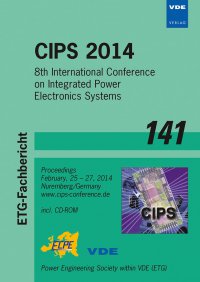Is Conductive Adhesive Bonding Suited for the Die-Attachment of Power Devices?
Konferenz: CIPS 2014 - 8th International Conference on Integrated Power Electronics Systems
25.02.2014 - 27.02.2014 in Nuremberg, Germany
Tagungsband: CIPS 2014
Seiten: 6Sprache: EnglischTyp: PDF
Persönliche VDE-Mitglieder erhalten auf diesen Artikel 10% Rabatt
Autoren:
Ocklenburg, Johanna; Moeller, Eike; Wilde, Juergen (University of Freiburg, IMTEK, Department of Microsystems Engineering, Georges-Koehler-Allee 103, 79110 Freiburg, Germany)
Rastjagaev, Eugen (Infineon Technologies Austria AG, Villach, Austria)
Inhalt:
In this study, the objective was to analyze experimentally if electrically conductive adhesives have a potential to be used for die attachment in power electronics. Commercial and prototype adhesives were tested with respect to their electrical and thermal conductivity. Furthermore their shear strength, stress development and mechanical reliability in thermal and power cycling were tested. To that purpose Si chips were mounted onto representative substrate materials. It was found out that the adhesives have sufficient electrical conductivities as well as high fusing currents and can be used up to current densities of 2 A/mm2 even without forced cooling. The comparison between the thermal resistance of soldered joints and adhesive joints showed that adhesive bonding, it still has sufficient potential for power applications. Besides the materials, also the interfaces and the layer thickness are relevant to reduce the Rth. FE simulations were performed to extract thermal conductivities and interface resistances of the adhesives. Mechanical and thermal testing showed that the adhesives build up a strong adhesion to all of the tested substrates. Some of the adhesives achieved high shear strengths up to 2000 temperature cycles from -40 to 175 °C. For the tested samples crack propagation rates were determined. First results of power cycling (?T=100 K) clearly showed that with adhesive bonds lifetimes are achieved which exceed those of solder joints by more than a factor of two. These results confirm that now adhesives are available, which can be used for the die-attachment of power chips.


